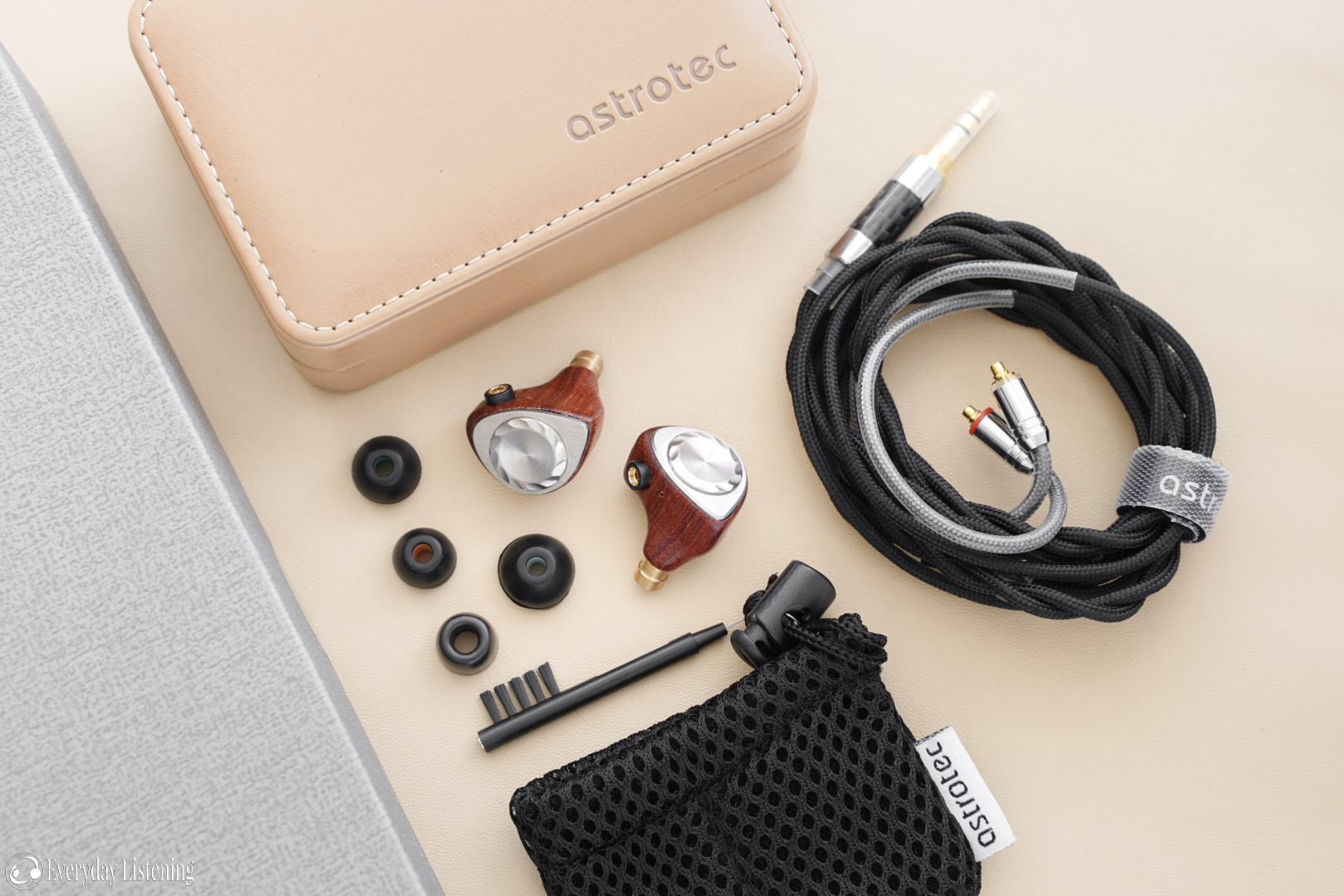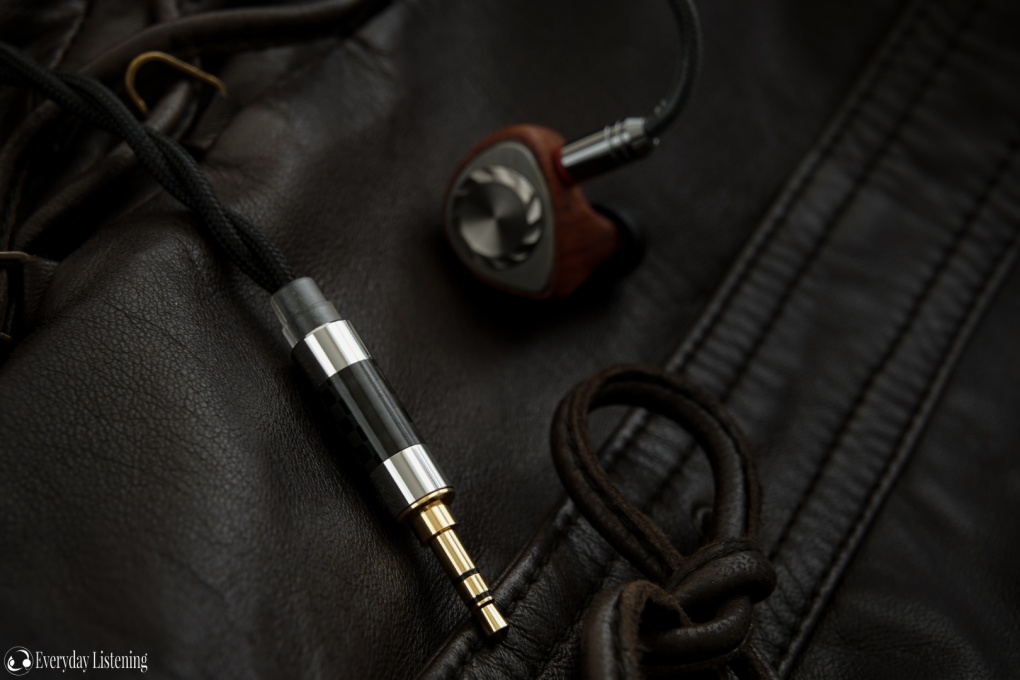Pros –
Gorgeous build with ergonomic design, Excellent stock cable, Outstanding micro-detail retrieval, Hugely dynamic bass, Highly engaging yet balanced signature
Cons –
Thin treble, Occasionally dry male vocal reproduction, Requires heaps of driving power for ideal performance
Verdict –
The Phoenix provides a hyper-attractive visual and auditory experience with a tuning that showcases its profuse technical ability first and foremost.
Introduction –
Astrotec was founded almost 2 decades ago in Shenzhen with the pursuit of innovation and excellence. Since then, they’ve created some of the finest and most exclusive earbuds on the market alongside a line of more value-orientated IEMs. The designers at Astrotec couldn’t stop there, however. Enter the Phoenix, the company’s first flagship IEM. Here, Astrotec pairs cutting-edge electro-static tweeters found more commonly on summit-fi monitors costing multiples more with a huge, custom dynamic driver. Alongside authentic rosewood and titanium alloy housings, creating an optimal acoustic environment, the Phoenix promises a highly resolving and engaging sonic performance that exceeds its not insubstantial $799 YUSD asking price. This is another intriguing almost value-orientated flagship from a company with a rich heritage in quality audio and design. You can read more about the Phoenix and treat yourself to one here.
Disclaimer –
I would like to thank Astrotec very much for their quick communication and for providing me with the Phoenix for the purpose of review. I would also like to thank the company for being so supportive when my initial unit was damaged in the mail. All words are my own and there is no monetary incentive for a positive review. Despite receiving the earphones free of cost, I will attempt to be as objective as possible in my evaluation.
Specs –
Driver Unit: Dual Electrostatic super tweeters+ customized dynamic driver
Impedance: 32 ohms
Sensitivity: 85 dB/1mW
Cable: 6N OCC mixed with Kevlar
Cable Length: 1.2m
Connector: MMCX
Frequency Response: 5Hz – 40000Hz
The Pitch –
Electrostatic tweeters
Sonion quite recently released dual and quad electrostatic tweeter systems that have been the buzz of the high-end IEM world. Electrostatic drivers as many will know from boutique Hi-Fi speakers implement an ultralight charged membrane manipulated by static force, functioning very differently to other driver types. As there is no magnetic trace like a planar magnetic driver, the membrane is even thinner and lighter for a more accurate transient response. Furthermore, force application is exceptionally uniform for very low distortion high frequencies.
True electrostatic drivers represent the pinnacle of high-precision sound reproduction but are difficult to miniaturise, as they must be driven by a high voltage source and struggle to reproduce deep bass. To circumvent this challenge, Sonion introduced a micro-transformer to omit the need for an external high-voltage amp. However, as a result, the sensitivity is especially low so finding suitable bass drivers to match has been an ongoing challenge for manufacturers. Astrotec circumvents this by implementing a large, custom dynamic driver and through delicate tuning of the surrounding acoustics to unite their sound into a coherent whole.
Tuned Acoustics
The Phoenix features authentic rosewood shells in addition to high-precision titanium and aluminium faceplates. Wood is dense and naturally anti-resonant, in the case of the later, more so than plastic and metal. It is a preferred material in speaker design as a result and has been implemented in the past for IEM designs to good effect. In addition, the nozzle implements a brass construction, all providing the ideal acoustic environment for the driver setup inside in addition to tailoring the frequency response to Astrotec’s specifications.
Unboxing –

Astrotec always provides a premium unboxing experience and the very same is exemplified with their flagship Phoenix. Inside an attractive glittered sleeve lies a linen-textured hard box. The earphones are nestled within protective form inside with the leather carrying case and other accessories below. Included are 3 pairs of Sony Hybrids, a pair of memory foam tips, a cleaning tool and a dual compartment sleeve similar to that included with Campfire Audio’s earphones. The sleeve is a protective and pocketable solution with separate compartments for each earpiece and a spongey construction that protects from drops and scratches. The included leather case looks very premium. Unfortunately, it isn’t usable as there is a cable-management pillar in the centre that makes it impossible to accommodate the housings without removing the cable first, hardly practical nor good for wear and tear. I have been informed that later batches come without the pillar which should alleviate this issue.
Design –
As aforementioned, the material choice is opulent and exclusive with a genuine rosewood construction and delicately textured metal faceplates. They assume a pod-shaped housing but with a taller profile similar to the Meze Rai Penta. As such, though large, they occupy the empty space of the outer ear to maximise comfort and it forms an attractive shape with clean lines overall. I’m also nostalgic to see the return of wood housings as I haven’t recalled an earphone with such a construction since the JVX FX-range, all of which possessed very pleasing sounds as well.

And in person, the Phoenix is simply gorgeous; even the best photographs cannot encapsulate the unique wood grain of each hand-finished shell. The level of finish is excellent with gently curved edges and contours showcasing not one noticeable imperfection or frayed edge. Such a complexion is very difficult to achieve with wood and is certainly befitting of a flagship product. The brass nozzle complements their rustic aesthetic while enhancing the acoustics of the earphone. A small but appreciated touch are the reinforced MMCX connectors on the housings themselves; with plastic anchoring addressing an otherwise common point of failure.

I am also very impressed with the stock cable. It’s an MMCX unit with 6N OCC conductors, internal Kevlar reinforcement and a soft fabric jacket that looks simply dapper with the wood housings. Though thick, the cable is supple and compliant making it unobtrusive to comfort. They may wiggle loose during active use but realistically that is not the intended use case of a high-end IEM and they posed no issue to me during daily use. Tangles are also not a problem and there is minimal memory or springiness. The cable has a uniform aesthetic with matching chrome finish on all metal terminations. The 3.5mm straight jack feels well relieved and the pre-moulded ear guides sustain the weight of the earphones and thicker cable comfortably.
Fit & Isolation –

Ergonomics are a strong point for the Phoenix, they slot confidently into the ear, complementing each curve and fold. There’s a gentle fin for the concha to aid fit stability and, though on the larger side, the majority of their dimension is derived from their width. They don’t provide a low profile fit but also don’t feel as large as they look in wearing as a result. I experienced no hotspot formation over several hours of listening and found them perfectly comfortable to wear as a result. They seal very well, and isolation is excellent for a vented hybrid earphone though the front-facing vent is susceptible to wind noise when listening outdoors. I found them to provide easily enough isolation for commute but naturally a bit less than a fully sealed unit.
Next Page: Sounds, Comparisons & Verdict



